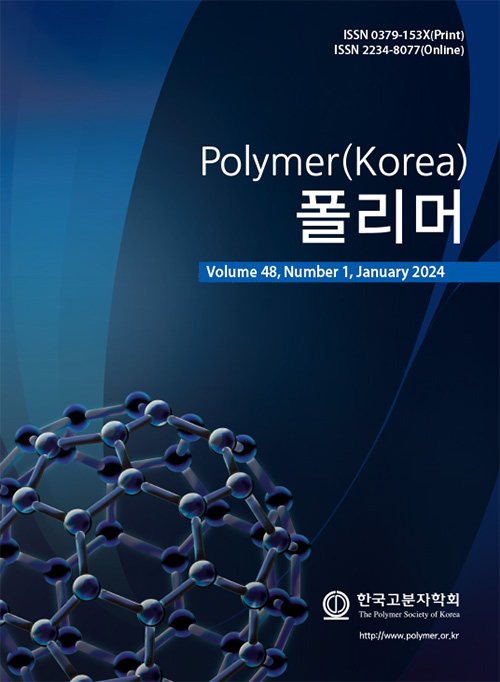- Photocatalytic and Filtration Elimination of Methylene Blue by Nanofibrous Polystyrene Membrane Containing TiO2 Nanotubes
Department of Nanotechnology, Faculty of Chemistry, Urmia University, Urmia, 5756151818, Iran
- TiO2 나노튜브를 함유한 나노섬유 Polystyrene 막을 이용한 Methylene Blue의 광촉매 및 여과 제거 연구
Reproduction, stored in a retrieval system, or transmitted in any form of any part of this publication is permitted only by written permission from the Polymer Society of Korea.
In this research, the nanofibrous polystyrene /titanium dioxide nanotube (PS/TiO2 nanotubes) membrane was prepared by the electrospinning method. Titanium dioxide nanotubes were synthesized by the anodizing method and stabilized on the fibrous polystyrene membrane. Then, the effect of different weight percentages of titanium dioxide nanotubes on the performance of the resulting membranes was investigated. The nanoparticles and nano-composites prepared in this research were analyzed using several analyses, including Fourier transform infrared spectroscopy (FTIR) and field emission scanning electron microscopy (FE-SEM), along with X-ray energy diffraction spectroscopy (EDS). The thermal behavior and crystal structure of prepared nano-composite membranes were investigated using (TGA) analysis and X-ray diffraction (XRD), respectively. Afterward, to investigate the prepared structures, analyses such as porosity measurement, water contact angle, swelling, and water flux of the membranes were performed. The photocatalytic property of the prepared membranes in the decomposition of methylene blue was investigated by two methods (static and dynamic). The obtained results demonstrated that the dye removal was accomplished in the best way in the static method (using the membrane as an absorbent) for 48 h. The prepared nano-composite membranes were also used in the dye filtration removal process, and the best result was obtained by using the membrane containing titanium dioxide nanotubes with a concentration, of 0.05 gr/V(50). The swelling degree in the fibrous polystyrene membrane was 135%, while in the membrane containing 0.1% titanium dioxide nanotubes, which is the optimal membrane, was 66%. Hydrophilicity measurements by water contact angle revealed that the presence of TiO2 nanotubes improved by about 10%.
Keywords: nano-composite membrane, electrospinning, titanium dioxide nanotubes, water treatment, photocatalysis.
- Polymer(Korea) 폴리머
- Frequency : Bimonthly(odd)
ISSN 0379-153X(Print)
ISSN 2234-8077(Online)
Abbr. Polym. Korea - 2023 Impact Factor : 0.4
- Indexed in SCIE
 This Article
This Article
-
2024; 48(1): 1-9
Published online Jan 25, 2024
- 10.7317/pk.2024.48.1.1
- Received on Jun 12, 2023
- Revised on Oct 3, 2023
- Accepted on Oct 16, 2023
 Correspondence to
Correspondence to
- Mehdi Mahmoudian
-
Department of Nanotechnology, Faculty of Chemistry, Urmia University, Urmia, 5756151818, Iran
- E-mail: m.mahmoudian@urmia.ac.ir










 Copyright(c) The Polymer Society of Korea. All right reserved.
Copyright(c) The Polymer Society of Korea. All right reserved.